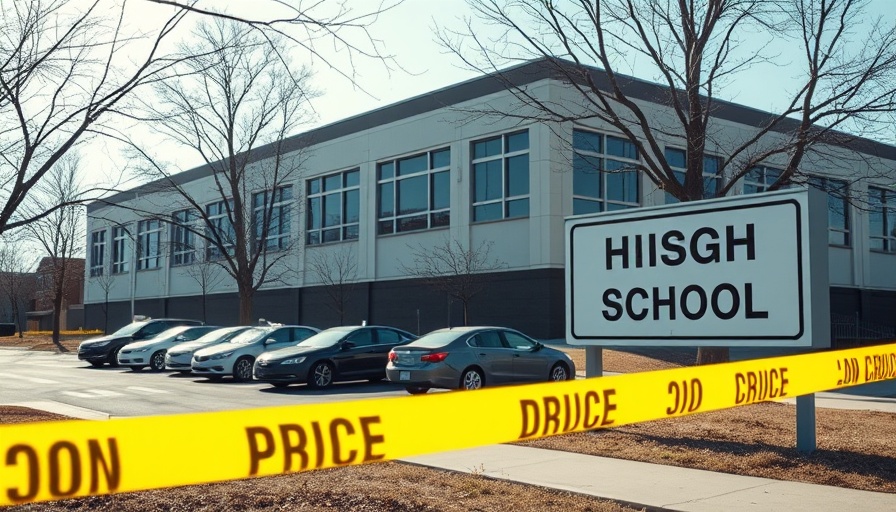
Unraveling the Digital Pathway to Violence
In an era dominated by the vast expanse of the internet, the connection between online behavior and real-world violence is becoming increasingly evident. Recently, the Anti-Defamation League (ADL) launched an interactive timeline that details how two school shooters, Natalie Rupnow and Solomon Henderson, followed remarkably similar digital paths leading up to their violent acts. Both shooters engaged with extremist content online, displaying a concerning trend that warrants attention among law enforcement, educators, and policymakers.
The Slippery Slope: Online Radicalization
The timeline illustrates the gradual descent of Rupnow and Henderson into extremism, emphasizing a shared engagement with violence-oriented online communities. Their activities on platforms such as the infamous 'WatchPeopleDie,' a website notorious for its graphic content, reveal how exposure to violent imagery and ideologies can warp the minds of young individuals. ADL notes they established accounts on this site as early as June 2023, less than two years before launching their attacks—one at Abundant Life Christian School and the other at Antioch High School. This escalating involvement with violent content raises critical questions about the susceptibility of impressionable youth to online radicalization.
Common Threads in Extremism
Despite notable differences in their backgrounds—Henderson being a teenage boy and Rupnow a teenage girl—both engaged in discussions that highlighted extremist ideologies transcending race and gender. Their digital footprints reveal interactions with accounts celebrating mass killers and glorifying violence. Each made their first social media post concerning mass murderers within months of creating their accounts. These alarming patterns can unfortunately serve as a blueprint for other youths tempted by similar extremist narratives.
Addressing the Challenge: Awareness and Prevention
In response to these findings, the ADL has proactively contacted 16,000 school superintendents across the nation. This outreach aims to increase awareness about the kind of content students might access through school networks and to propose the integration of appropriate safeguards. The ultimate goal is to curtail the influence of extreme online behavior on youth and to foster a safer community.
Implications for Law Enforcement and Policy-Making
These incidents emphasize the pressing need for law enforcement agencies and policymakers to address the growing threat of online radicalization. Organizations can leverage technological innovations such as AI analytics and crime prediction software to analyze patterns of online behavior and identify potential threats before they materialize. As police departments modernize their training programs, an emphasis on recognizing and responding to early indicators of radicalization is crucial. Moreover, enhancing police-community relations by involving parents and educators in discussions about these issues can serve as a vital preventive measure.
Moving Forward: A Call to Action
Public safety depends on collaborative efforts to combat the influence of online extremism. Law enforcement officers are urged to seek continued education on the links between digital interactions and acts of violence while reinforcing community ties for preventive strategies. By understanding the realities of online radicalization, we can better equip ourselves to protect our youth and ensure safer environments.
In light of these revelations, it's imperative that we take proactive steps to secure our communities from the threat of future tragedies. Awareness is the first step, so connect your local law enforcement with resources that can bolster training and education around this critical issue.
 Add Row
Add Row  Add
Add 

 Add Element
Add Element 


Write A Comment